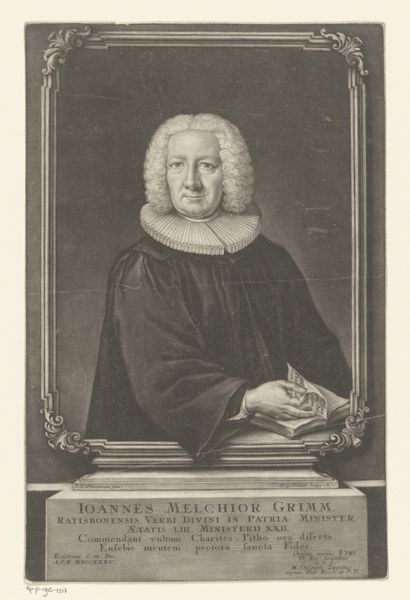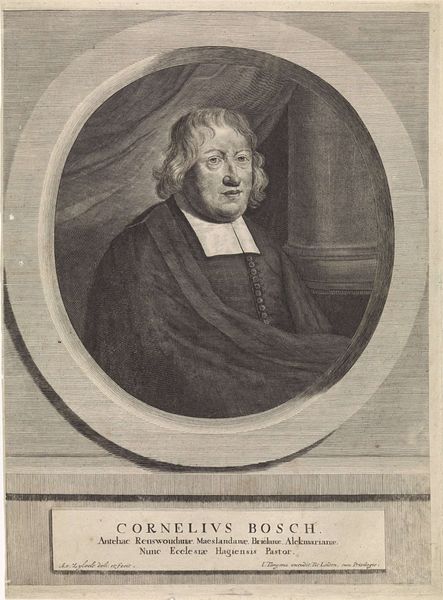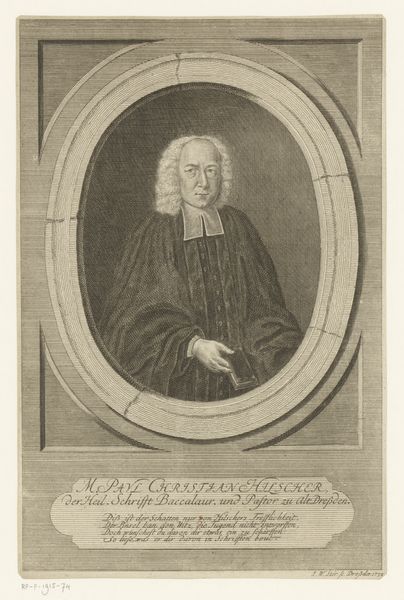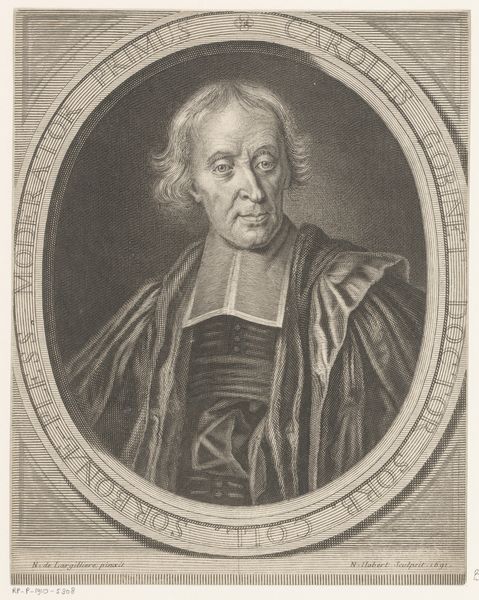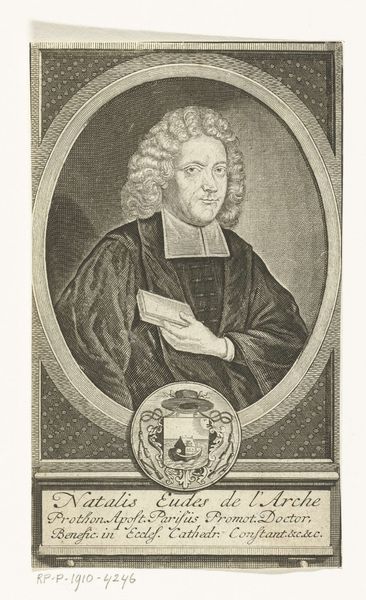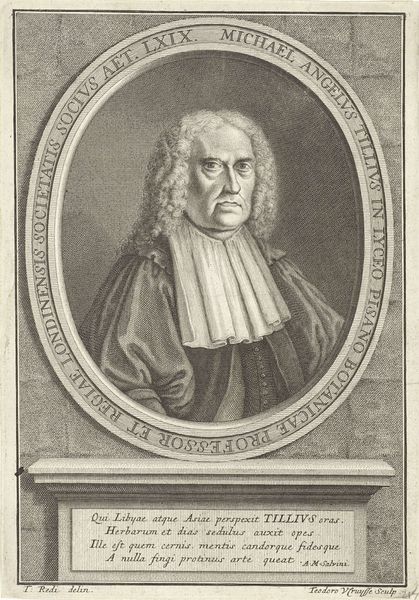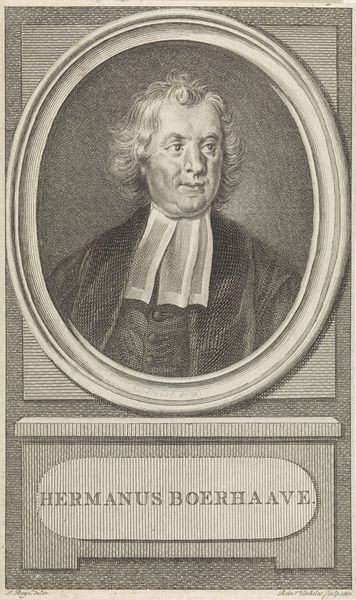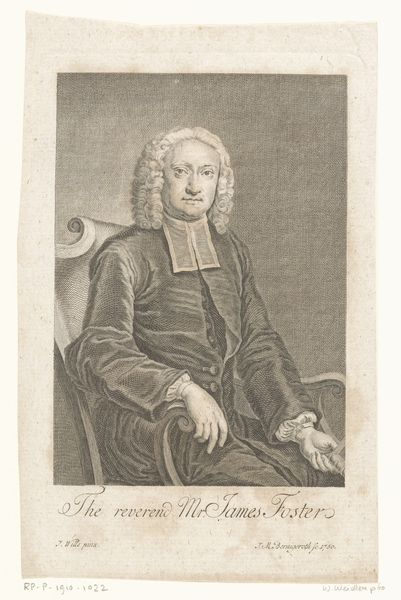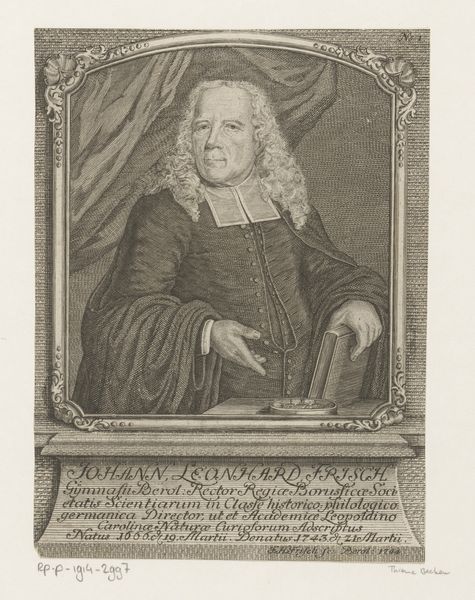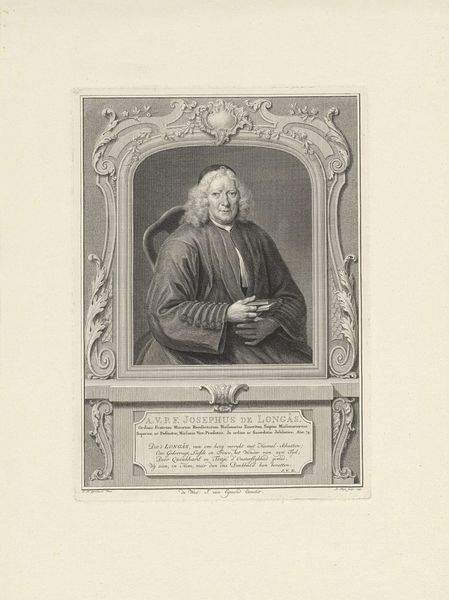
Dimensions: height 186 mm, width 150 mm
Copyright: Rijks Museum: Open Domain
Editor: This is "Portret van Martin Luther," made sometime between 1760 and 1785 by Pieter Willem van Megen. It's an engraving. I'm struck by how this historical figure is presented through this… meticulous process. What stands out to you about this print? Curator: Well, the first thing that catches my eye is the sheer labor involved in creating an engraving like this. Think about the precise hand movements, the pressure applied to the plate, the repetition… It speaks to a specific mode of production and, potentially, a consumer market for such images. Do you think this piece democratizes Luther’s image, making it more accessible? Editor: That's interesting, I hadn't considered it in terms of accessibility. Previously, paintings were the domain of the wealthy; creating multiples, though, seems like a departure in how images were disseminated. Curator: Exactly. Engravings were a key tool in the circulation of ideas during this period. They become objects of trade, commodities shaped by economic forces. Look at the way Luther is depicted. Does his clothing, the setting… how do those details factor into the engraving's value as an object? Is it meant to inspire reverence, or something else entirely? Editor: Now that you point it out, the repetitive marks used for texture, it almost makes his robe seem like fabric one could purchase... and the plain background. Perhaps, rather than reverence, it shows Luther as an everyday man accessible to the general public. Curator: Precisely. And who controlled the production of these engravings? Was it an independent craftsman, or a larger workshop employing a division of labor? Those material conditions fundamentally shape the image we see. Editor: I guess looking at the artistic choices involved also gives clues about how widespread or exclusive this was meant to be! I’ll definitely think differently about prints from now on. Curator: Indeed. By considering the material process, we unveil a whole new layer of meaning.
Comments
No comments
Be the first to comment and join the conversation on the ultimate creative platform.
